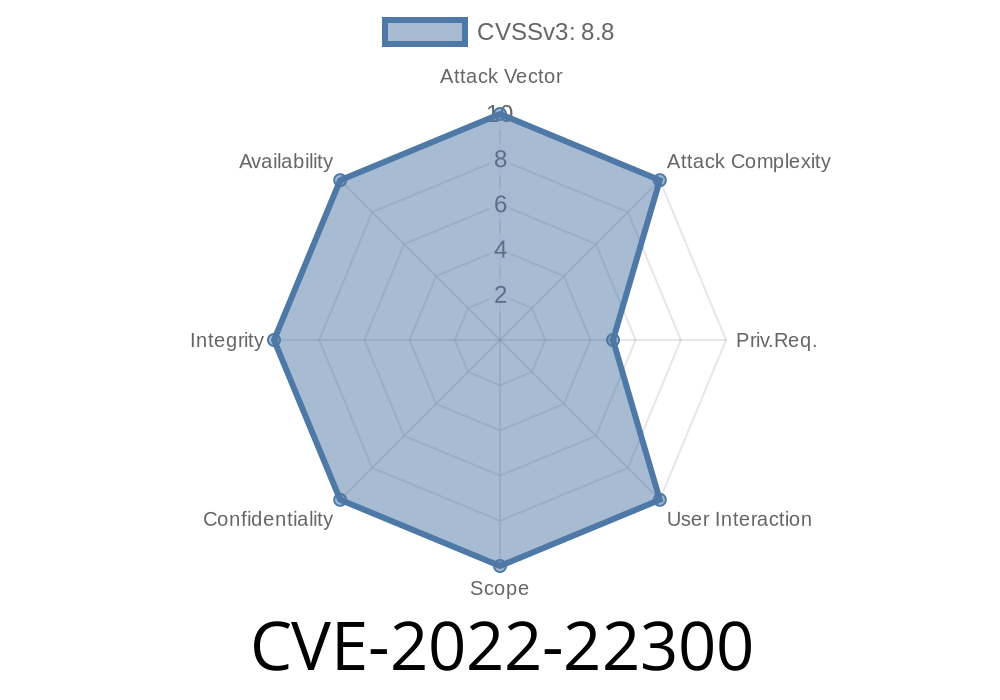CVE-2022-22300 is a recently discovered vulnerability that affects multiple versions of Fortinet FortiAnalyzer and FortiManager products. This vulnerability can allow an attacker to bypass the device policy and force a password-change action for other users.
In this long-read post, we will provide an in-depth analysis of this vulnerability, including affected versions, exploit details, and how to mitigate the potential risks. We will also include code snippets to demonstrate how the vulnerability can be exploited, focusing on the importance of proper handling of insufficient permissions or privileges.
Exploit Details
The vulnerability, which is caused by improper handling of insufficient permissions or privileges in the affected Fortinet products, allows an attacker with low-level privileges to bypass the device policy and force a password change for other users. This can lead to unauthorized access to sensitive information and the ability to compromise the entire system.
The following code snippet demonstrates how an attacker could exploit this vulnerability
POST /api/request HTTP/1.1
Host: <target IP address>
Content-Type: application/json
Authorization: Bearer <attacker token>
{
"method": "set",
"params": [
{
"url": "/user/password",
"user-id": <victim_user_id>,
"new-pass": "<new_password>"
}
],
"id": 1
}
In this example, the attacker sends a HTTP POST request to the target device's API with a low-privileged attacker token in the Authorization header. The attacker then specifies the user ID of the victim user in the user-id field and the new password they want to set in the new-pass field.
When the affected Fortinet product processes this request, it does not properly check the permissions of the attacker, allowing them to change the victim's password. This can lead to unauthorized access and potential system compromise.
You can find more information about CVE-2022-22300 in the following links
1. Fortinet Advisory: FG-IR-21-213
2. CVE Details: CVE-2022-22300
Mitigation
To mitigate the impact of this vulnerability, it is essential to update the affected Fortinet products immediately to the latest versions. Fortinet has released patches that address this vulnerability in its FortiAnalyzer and FortiManager products.
For more detailed instructions on upgrading your Fortinet products, please refer to the respective product documentation.
Conclusion
CVE-2022-22300 is a serious vulnerability that can lead to unauthorized access to sensitive information and compromise an entire system. By understanding the exploit details and implementing the proper mitigation measures, you can safeguard your organization from potential attackers.
Timeline
Published on: 03/01/2022 19:15:00 UTC
Last modified on: 03/09/2022 14:51:00 UTC
